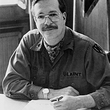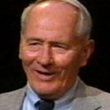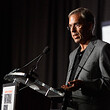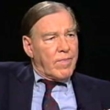Yanks : the epic story of the American Army in World War I
(Book)
Description
Copies
| Location | Call Number | Status |
|---|---|---|
| Eisenhower Public Library District - Stacks | 940.4 EIS | On Shelf |
| Glenwood-Lynwood Public Library District - Stacks | 940.4127 EIS | On Shelf |
| Oak Park Public Library Main Branch - Third Floor | 940.4144 EIS | On Shelf |
| River Forest Public Library - Nonfiction Stacks | 940.4127 EIS | On Shelf |
| St. Charles Public Library District - Adult Nonfiction | 940.412 EIS | On Shelf |
Similar Titles From NoveList
Similar Authors From NoveList
More Details
Notes
Published Reviews
Booklist Review
The conventional wisdom of many historians, both European and American, tends to denigrate the military contribution of the American Expeditionary Force to the Allied victory in World War I. According to this view, the Americans presented to the Germans the threat of a vast, new manpower pool for the near-exhausted Allied forces, thus increasing pressure upon the Germans to accept an armistice; but this view also maintains that the inexperienced, poorly trained Americans had little influence upon the military balance of power in France. Eisenhower, a retired brigadier general and son of our thirty-fourth president, does much to revise this one-sided picture (with the help of his coauthor). Although acknowledging the Americans' shortcoming in combat experience and equipment, Eisenhower shows how a gifted officer corps, which included George Marshall, George Patton, and Billy Mitchell, molded the Americans into a very effective fighting force that was a vital cog in defeating German ground forces. This is an important work that should help alter the historical picture of the American role in the conflict. --Jay Freeman
Publisher's Weekly Review
Starting from near zero, the U.S. and Gen. John Pershing created a war-winning army in less than 18 months; veteran historian Eisenhower (Agent of Destiny, etc.) tells how they did it in this fast-paced narrative. A retired brigadier general in the army reserves, Eisenhower (writing here with spouse Joanne) presents the U.S. involvement in the war from the perspective of statesmen and generals. Even for combat color, he focuses primarily on senior officers: Douglas MacArthur and George Patton, with his insouciant courage under fire; George C. Marshall; and lesser-known figures like Charles Summerall, who threw a whole army's rear echelons into compound confusion in order to give the 1st Infantry Division a chance to capture Sedan in the war's final days. That kind of drive and energy was necessary given America's almost complete military unpreparedness. It took almost a year for the U.S. Army to put a single division of the American Expeditionary Force into battle. Without denying the administrative problems and the casualties caused by inexperience and improvisation, Eisenhower stresses the Americans' high learning curves at all levels. He argues as well that Pershing was an effective commander even in the Argonne campaign, the one most often cited as bringing the AEF nearly to gridlock, making a remarkably clear presentation of that confusing combat. Eisenhower sympathizes with Pershing's belief that the armistice was a mistake, that even a few days more might have convinced the Germans they had, in fact, been defeated in the field. It remains an arguable position, but the AEF emerges from these pages as the decisive instrument of an incomplete victory. (June 4) Forecast: The Eisenhower name, both presidential and military historical (John S.D. is the son of Dwight David), will draw readers to this title, which is suitable for generalists and buffs alike. The latter, however, will be more likely to take this blow-by-blow account all the way to the register. (c) Copyright PWxyz, LLC. All rights reserved
Library Journal Review
This history focuses entirely on the challenges, victories, sacrifices (320,500 casualties), and long-term consequences of the American Expeditionary Force (AEF) in Europe during World War I. According to Eisenhower (brigadier general, ret.; Agent of Destiny: The Life and Times of General Winfield Scott), the AEF was originally meant to be amalgamated with the Allied armies in Europe, but through the stubborn insistence of the Wilson administration and Gen. "Black" Jack Pershing, the Americans fought under their own colors. This well-written work demonstrates how a small, ill-equipped force grew into an awesome fighting machine and was led to victory after victory (Marne, Chteau-Thierry, Belleau Wood, Soissons, St. Mihiel, Meuse-Argonne) by a gifted, opportunistic corps of officers eager to prove themselves and their units. Battlefield accounts are enlivened with evocative recollections from the diaries and memoirs of officers and doughboys alike. Eisenhower contends that the AEF's contributions in France ranged from cowering the Central Powers into submission in 1918 to serving as an indispensable military model for World War II. This soundly researched effort, which would have benefited only from the inclusion of AEF engagement maps, includes Eisenhower's explanatory endnotes as an extra bonus. Recommended for all general and academic libraries. John Carver Edwards, Univ. of Georgia Libs., Athens (c) Copyright 2010. Library Journals LLC, a wholly owned subsidiary of Media Source, Inc. No redistribution permitted.
Reviews from GoodReads
Citations
Eisenhower, J. S. D. (2001). Yanks: the epic story of the American Army in World War I . Free Press.
Chicago / Turabian - Author Date Citation, 17th Edition (style guide)Eisenhower, John S. D., 1922-2013. 2001. Yanks: The Epic Story of the American Army in World War I. New York: Free Press.
Chicago / Turabian - Humanities (Notes and Bibliography) Citation, 17th Edition (style guide)Eisenhower, John S. D., 1922-2013. Yanks: The Epic Story of the American Army in World War I New York: Free Press, 2001.
Harvard Citation (style guide)Eisenhower, J. S. D. (2001). Yanks: the epic story of the american army in world war I. New York: Free Press.
MLA Citation, 9th Edition (style guide)Eisenhower, John S. D. Yanks: The Epic Story of the American Army in World War I Free Press, 2001.





























